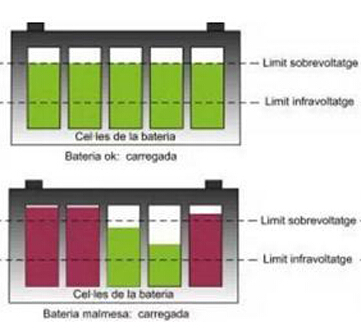 Recently, the National Standardization Management Committee approved the release of GB / T 18384.3-2015 "electric vehicle safety requirements Part 3: personnel electric shock protection" No. 1 notice of the notice, since July 1, 2017 from the implementation.
Recently, the National Standardization Management Committee approved the release of GB / T 18384.3-2015 "electric vehicle safety requirements Part 3: personnel electric shock protection" No. 1 notice of the notice, since July 1, 2017 from the implementation.The standard modification is mainly for three parts: one, "4 voltage level"; two, "5.1 high voltage warning mark"; three, "6.7.1 general rule".
Each part of the modified content on the basis of the original standard, adding a clear division of the B-class circuit voltage. Modification: For a circuit connected to each other, when one pole of the DC live part of the circuit is connected to the electrical platform, and any other live part and the maximum voltage of this pole is ≤ 30 V AC (rms) and ≤ 60 V DC , Then the conduction connection circuit does not completely belong to the B-level voltage circuit, only the B-level voltage to run the part was identified as B-level voltage circuit. See the annex for the original text.
Class B circuit voltage specification protection Car personnel, anti-shock. The B-level voltage circuit, which has been mentioned, refers to a high-voltage circuit greater than 60 volts.
In the "electric vehicle safety requirements Part 3: personnel electric shock protection" standard expressly stipulates the personnel electric shock protection methods and requirements:
1, general rule. The electrical shock hazard shall include protection against the direct contact of personnel with any live parts and in the event of substantially insulation failure of the live parts. For Class A voltage circuits are not required to provide protection against electric shock hazards.
2, to prevent direct contact. On the B-class voltage of any part of the circuit, the respondent personnel to provide direct contact with electric shock hazards protection. Direct contact protection shall be provided by the basic insulation of the live part or by a combination of shelter / enclosure, or both.
3, the basic insulation failure under the protection. B-type circuit charged part of the basic insulation failure of the case, should prevent the exposure of electric vehicles and exposed parts of the electric shock caused by electrical hazards. Protection in the event of a failure is provided by a Class I or Class II device or a combination of both.
annex:
GB / T 18384.3-2015 "Safety requirements for electric vehicles Part 3: Personnel electrical shock protection" Amendment No. 1
One, "4 voltage level"
Original standard
According to the maximum operating voltage U, the electrical components or circuits are divided into the following grades.
Revised standard
According to the maximum operating voltage U, the electrical components or circuits are divided into the following grades.
For a circuit connected to each other, when one pole of the DC live part of the circuit is connected to the electrical platform and the other of the live part and the maximum voltage of the pole is ≤ 30 V AC (rms) and ≤ 60 V DC, then Conductive connection circuit is not entirely B-class voltage circuit, only the B-level voltage is only part of the operation was identified as B-level voltage circuit.
Second, "5.1 high voltage warning mark"
Original standard
Class B voltage of the energy storage system, such as REESS and fuel cell stack, should be marked with the symbols shown in Figure 1. The symbol's background is yellow, the border and the arrow are black. Refer to GB 2893, GB 2894 and GB / T 5465.2.
When removing the shelter or shell can be exposed B-class voltage charged part of the shelter and the shell should also have the same symbol clearly visible. When assessing whether or not this symbol is required, consideration should be given to the access and removal of the barrier / shell.
Revised standard
Class B voltage of the energy storage system, such as REESS and fuel cell stack, should be marked with the symbols shown in Figure 1. For a circuit that is connected to each other, when one pole of the DC live part is connected to the electrical platform and any other live part is connected with the maximum voltage of this pole ≤ 30 V AC (rms) and ≤ 60 V DC, then REESS Do not mark the symbol shown in Figure 1; otherwise, REESS regardless of the existence of B-class voltage, should be marked as shown in Figure 1 symbol. The symbol's background is yellow, the border and the arrow are black. Refer to GB 2893, GB 2894 and GB / T 5465.2.
When removing the shelter or shell can be exposed B-class voltage charged part of the shelter and the shell should also have the same symbol clearly visible. When assessing whether or not this symbol is required, consideration should be given to the access and removal of the barrier / shell.
Third, "6.7.1 General"
Original standard
At maximum operating voltage, the DC circuit insulation resistance should be at least greater than 100Ω / V, the AC circuit should be at least greater than 500Ω / V.
The entire circuit to meet the above requirements, depending on the structure of the circuit and the number of components, each component should have a higher insulation resistance.
If the DC and AC B-level voltage circuits are electrically connected together (Figure 2), one of the following two options should be met:
- Option 1: The combination circuit meets at least 500Ω / V requirements, or,
- Option 2: If the AC circuit has applied at least one additional protection method specified in 6.7.2, the combined circuit should meet at least 100Ω / V.
DC, AC circuit conduction connection of the B-class voltage system insulation resistance requirements
Revised standard
At maximum operating voltage, the DC circuit insulation resistance should be at least greater than 100Ω / V, the AC circuit should be at least greater than 500Ω / V.
The entire circuit to meet the above requirements, depending on the structure of the circuit and the number of components, each component should have a higher insulation resistance.
If the DC and AC B-level voltage circuits are electrically connected together (Figure 2), one of the following two options should be met:
- Option 1: The combination circuit meets at least 500Ω / V requirements, or,
- Option 2: If the AC circuit uses at least one additional protection method specified in 6.7.2, the combined circuit should meet at least 100Ω / v.
For a circuit that is connected to each other, when one pole of the DC live part is connected to the electrical platform and the other of the live parts and the maximum voltage of the pole is ≤ 30 V AC (rms) and ≤ 60 V DC, The requirements in sections (6.7), 7.2 and 8 are not applicable to the circuit (including the DC section and the AC section).
DC, AC circuit conduction connection of the B-class voltage system insulation resistance requirements.
















 RCCN WeChat QrCode
RCCN WeChat QrCode Mobile WebSite
Mobile WebSite







